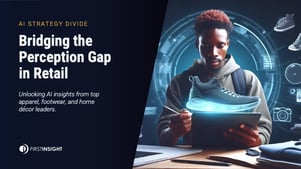One of the most frustrating conundrums in e-commerce is the abandoned shopping cart. Estimates are that half the culprits are just browsing, using the cart as a wish list. But a significant number abandon their carts when they get to checkout and discover their purchase is below the minimum for free shipping. That represents tons in lost sales that online merchants are desperate to capture.
In a marketplace where the same goods are available from multiple outlets, 75% of consumers rate shipping options as “extremely or very important” when deciding where they shop, according to a recent survey by Radial, an e-commerce fulfillment services provider.
That may be changing.
In a recent survey by First Insight, a third of the respondents – 62% more than last year – said they’d be willing to pay shipping costs of at least $10. Three out of four Gen X and Boomer respondents (roughly ages 60 to 75) said they’d be okay paying $20 or more. They also said they tend to spend more during big promotional events.
Another unexpected finding: the majority of online shoppers have become less demanding of rapid delivery.
Most said they expected their purchases to arrive between three to five days versus two days recorded in a similar survey a year ago. This is all good news for merchants, especially those with logistical overheads they can’t defray from paid annual membership programs like Amazon Prime.
On the other side of the coin, shoppers want to believe they are getting a bargain. Only about 30% in the First Insight survey said they would pay full price for gifts this year. More than four out of ten said that it will take substantial discounts and deals – at least 35% up to 50% – to get them to click on the “Place Your Order” button, no doubt an expectation lingering from last year’s aggressive discounting aimed at reducing bloated inventories.
For the most part, shipping never was free and the willingness of more consumers to pay for it suggests shoppers are catching on to the smoke-and-mirrors aspect of online retail pricing strategies. A Google shopping search will return prices that appear to be less than Amazon’s for the same item, but a few clicks later one discovers that the lower price does not include shipping which, when added, is about the same as Amazon’s free shipping offering.
By some estimates, free shipping is offered by about 75 percent of e-commerce companies.
This first post-pandemic year there have been concerted efforts to wean customers with tweaks to the requirements. The Radial study found that in the last 12 months, 85% of retailers have adjusted their shipping policies to boost profitability. Amazon, whose fulfillment costs for 2022 were about 35% of net product sales (and growing faster than revenue), boosted its Prime membership fee by $20 to $139 and added surcharges for orders below $25.

What Retail Executives Say About Supply Chain Disruption: Shortages, Pricing and Delays
We partnered with The Wharton Baker Retailing Center to create a comprehensive infographic exploring our findings.
View the Infographic
The State Of Consumer Spending: Gen Z Influencing All Generations To Make Sustainability-First Purchasing Decisions
We partnered with The Wharton Baker Retailing Center and asked consumers in the U.S. how sustainable practices are impacting shopping habits and purchase decisions.
Read the Report
InsightSuite for Small Business
Specialized Tools for Small & Emerging Businesses
The fastest and most cost effective way to increase sales, profits and sell-in for growing businesses and digitally native brands.
Learn more
Maximize Value, Speed & Profit
Learn how to leverage Voice of the Customer Analytics and 3D Product Creation to make more profitable products, faster.
Get the Free E-book
Kohl's Creates Value W/Predictive Analytics
Learn How First Insight's Predictive Tools Fuel Kohl's Success
As one of the world's leading omnichannel retailers with more than 1,100 stores in 49 states, Kohl's is leveraging First Insight's predictive analytics solution and voice-of-the-customer data to improve their business.
Watch the Webinar
Consumer Sustainability Survey 2021
The First Industry-Wide Consumer Study On Shoe Sustainability
This industry-wide survey aims to create a critical baseline that brands and retailers can use to ensure they understand what consumers actually comprehend, what terms and phrases resonate best, and what areas they should prioritize.
Download the Webinar & Findings
Navigating Disruption
How The Rockport Company is Optimizing Assortments and Pricing with Data + Digital Product Testing
Learn how The Rockport Company created a new product playbook powered by the Voice of the Customer and predictive tools.
View the Webinar & Highlights
HOTTER SHOES ATTRACTS YOUNGER AUDIENCE VIA ‘VOICE OF CUSTOMER’ ANALYTICS
While the Covid-19 pandemic hit most retailers hard, it created uniquely intense challenges for Hotter Shoes. Hotter needed to build up its e-commerce presence and appeal to a new group of shoppers at the same time.
Read the Case StudyOne of the hardest logistics issues to solve has been the problem of returns. Asked if they would be deterred from purchasing from retailers who charge for returns, three-quarters of respondents said yes, the same percentage as last year.
The e-commerce juggernaut continues to shape the retail landscape, but remains a work in progress.
Read the full blog on Forbes.com. *Subscription required.






